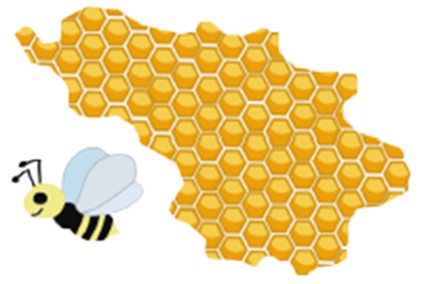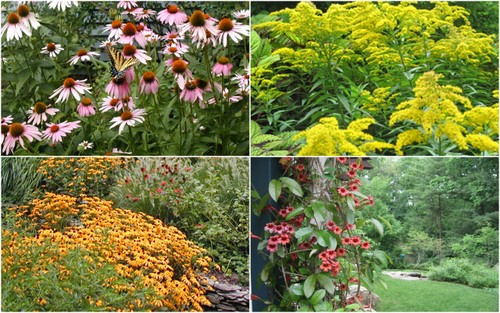
Attracting Pollinators
Why Attract Pollinators?
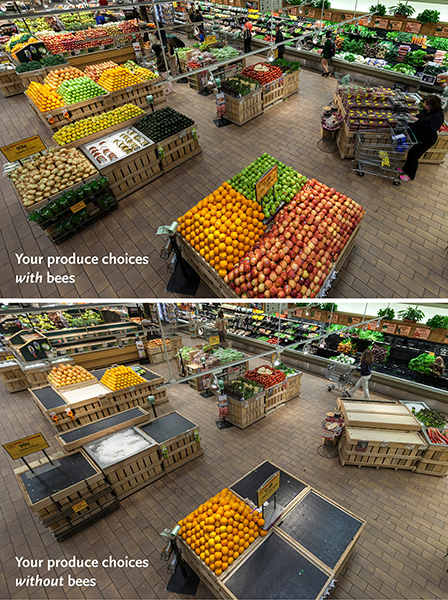
Every garden needs pollinators and bees. Without them, there would be limited flowers and even fewer fruits and vegetables. To get an idea of how bees affect our fruit and vegetable choices, compare these photographs of a grocery store produce section.
How to Attract Pollinators.
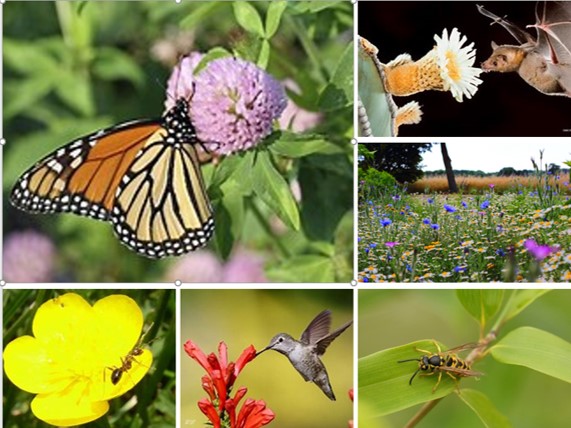
For a list of other pollinators, see link: "Other Pollinators" and "Solitary & Communal Bees"
When pollinators visit plants, they look for two things they need in their diets.
- Nectar: Nectar provides the pollinator with carbohydrates in the form of sugars, the main source of energy.
- Pollen: Pollen provides the proteins and fats they need.
Why Use Native Plants:
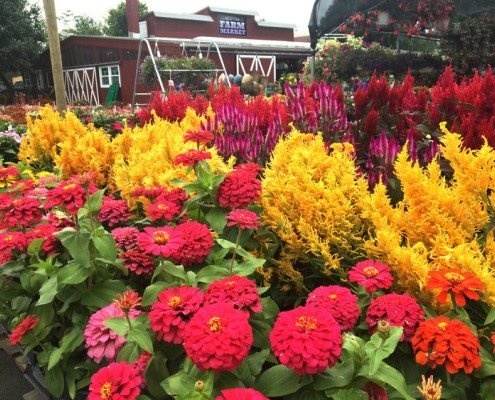
Many popular flower varieties are hybridized to produce plants that are disease resistant and which are more visually attractive such as flower size and color and bigger, longer blooms. Unfortunately, hybridization tends to reduce the production of nectar and pollen and sometimes leaves the resulting plant completely sterile and useless to bees and other pollinators. Besides the effects of hybridization, plants’ nectar production is affected by climate conditions such as temperature, humidity, and moisture in the soil.
General Gardening Advice

Here is some advice from the Xerces Society on what to plant to attract more bees to your garden.
- Don’t use pesticides.
- Use local native plants. Research suggests native plants are four times more attractive and suited to native bees than exotic flowers. Heirloom varieties of herbs and perennials can also provide good foraging.
- Chose several colors of flowers. Flower colors that particularly attract bees are blue, purple, violet, white, and yellow.
- Plant flowers in clumps. Flowers clustered into clumps of one species will attract more pollinators than individual plants scattered through the habitat patch. Where space allows, make the clumps four feet or more in diameter.
- Include flowers of different shapes. There are four thousand different species of bees in North America, and they are all different sizes, have different tongue lengths, and will feed on different shaped flowers. Consequently, providing a range of flower shapes means more bees can benefit.
- Have a diversity of plants flowering all season. Most bee species are generalists, feeding on a range of plants through their life cycle.
- Plant where bees will visit. Bees favor sunny spots over shade and need some shelter from strong winds.
To help bees and other pollinator insects like butterflies, you should provide a range of plants that will offer a succession of flowers, and thus provide pollen and nectar from early spring thru late fall.
Recommended Native Plants for Maryland
